Teaching context clues in social settings
Enhancing Communication Skills through Context Clues in Social Settings

Understanding the Role of Context Clues in Everyday Interactions
In social settings, effective communication relies not only on spoken words but also heavily on understanding nonverbal cues and contextual hints. Teaching individuals, especially students, how to interpret these clues enhances their social interactions, aids in building relationships, and improves overall comprehension. This article explores strategies, activities, and research-backed practices that educators and communicators can employ to effectively teach context clues in social environments.
Defining Social Context Clues and Their Significance
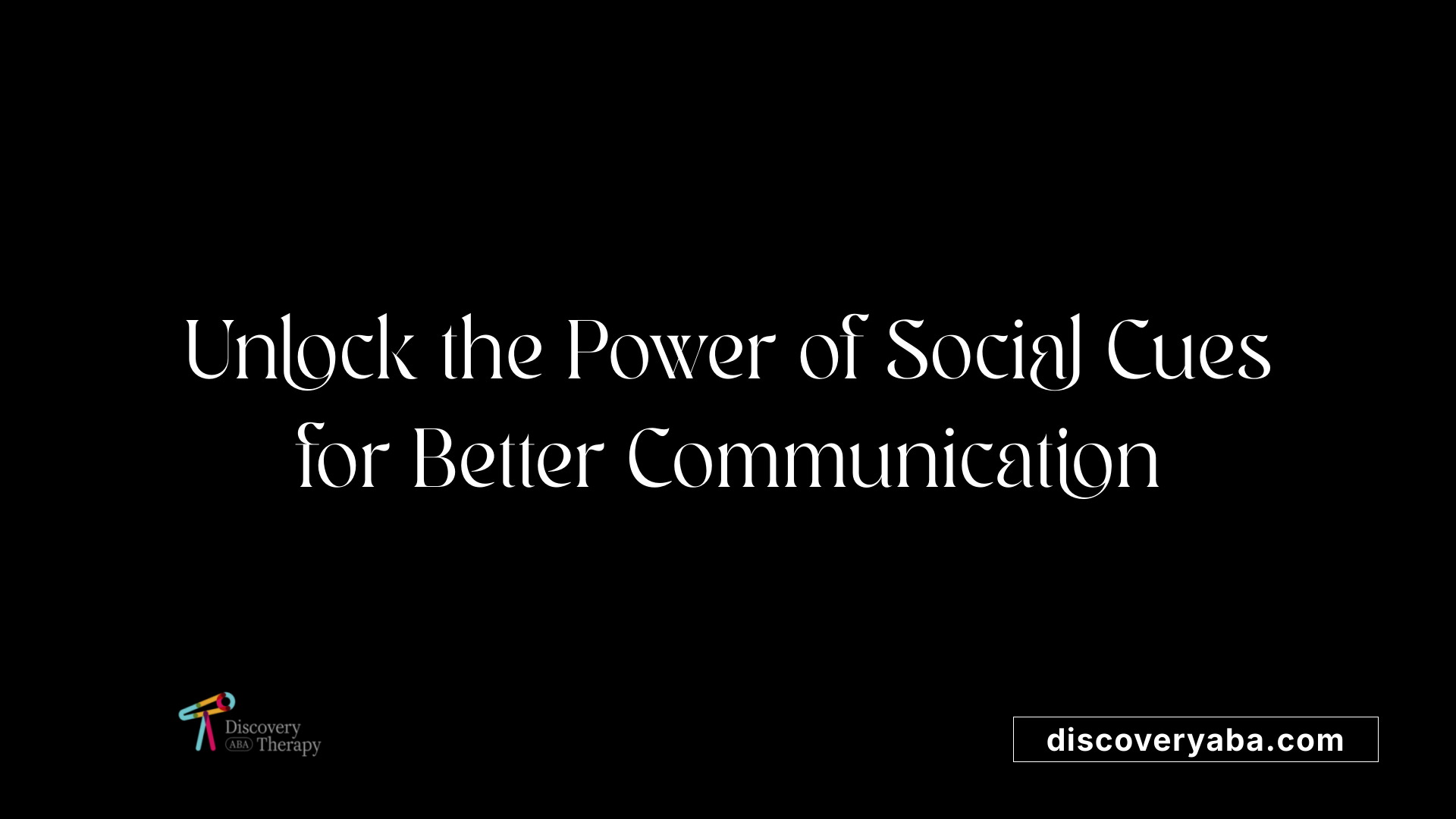
What are social context clues and how do they impact communication?
Social context clues, often called social cues, are nonverbal signals that influence how we understand others in social interactions. These cues include facial expressions, body language, tone of voice, and physical proximity. They provide important information about emotions, intentions, and social norms that words alone may not fully convey.
Understanding these cues is essential for effective communication. They help us interpret the mood of a conversation, detect sarcasm or sincerity, and respond appropriately. For example, a smile along with a friendly tone can indicate genuine warmth, while crossed arms and a stern voice might signal disagreement or discomfort.
The interpretation of social cues depends on the context and setting. What may be appropriate in one situation might not fit another. Therefore, considering the overall social environment is crucial when interpreting these signals.
People with social differences, such as autism spectrum disorder, may find it challenging to recognize and respond to social cues. Targeted support and social skills training can help improve their understanding and interaction skills.
In summary, social context clues are vital for rich, meaningful interactions. They influence communication effectiveness, help build relationships, and foster social understanding, making them an important aspect of everyday social life.
Teaching Strategies for Recognizing Social Cues
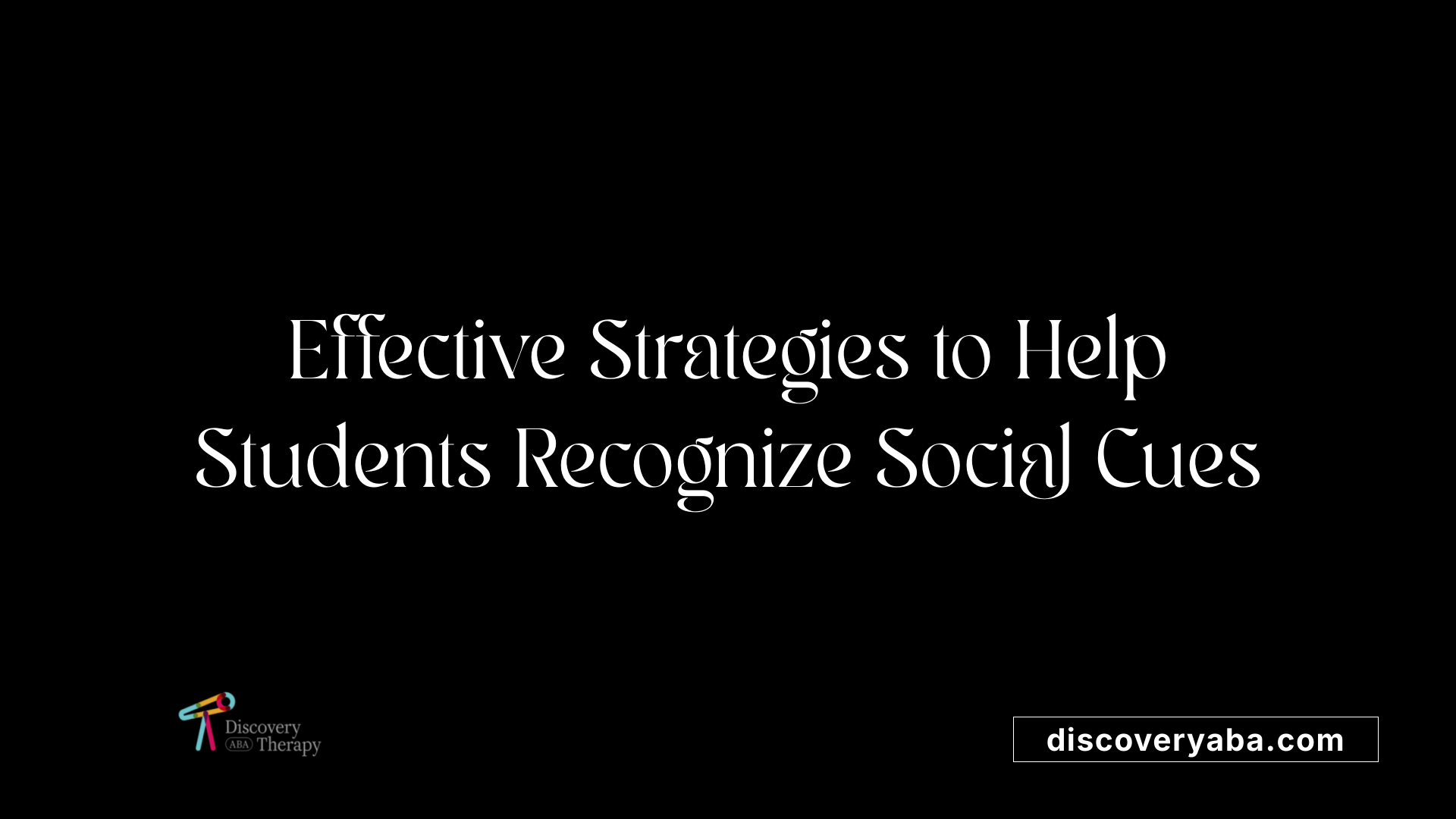 Understanding unfamiliar words is a fundamental skill that enhances both vocabulary development and overall reading comprehension. To effectively teach students to recognize and use context clues, educators should employ a range of targeted strategies and engaging activities.
Understanding unfamiliar words is a fundamental skill that enhances both vocabulary development and overall reading comprehension. To effectively teach students to recognize and use context clues, educators should employ a range of targeted strategies and engaging activities.
One effective approach begins with explicit instruction. Teachers introduce students to different types of context clues—such as definitions, synonyms, antonyms, explanations, and examples—by modeling how to identify and interpret these clues within various texts. For instance, think-alouds can demonstrate how skilled readers use clues to infer word meanings.
Practice across diverse texts strengthens these skills. Teachers can incorporate poetry, fiction, and informational books, providing scaffolded questions and activities that encourage learners to find clues and deduce word meanings in context. Short, challenging texts with embedded vocabulary are particularly effective, as they require active engagement and foster decoding strategies.
Tools like task cards featuring complex passages, anchor charts highlighting clue types, and digital activities can make instruction interactive and accessible. These resources scaffold learning, allowing students to repeatedly practice recognizing clues in different contexts. Regular routines like 'Word of the Day' or 'Word of the Week,' combined with classroom discussions, reinforce these skills through repetition.
In addition, integrating the use of graphic organizers and visual aids helps students internalize strategies. For example, semantic gradients (showing word meanings on a continuum) can clarify subtle differences between similar words, aiding comprehension.
Research underscores the importance of explicit teaching complemented by continuous practice. Programs like Jennifer Serravallo’s 'The Reading Strategies Book' provide practical strategies tailored for different grade levels. Focusing on word roots and patterns further deepens understanding, helping students recognize familiar parts of new words.
Role-playing, simulations, and multimedia resources—such as videos and interactive games—engage students actively and make learning dynamic. For example, students might work in pairs or groups to identify clues and share their reasoning, fostering collaborative learning.
Collectively, these strategies reinforce students’ ability to decode unfamiliar words independently. By making explicit instruction, varied practice, and interactive learning a routine component of literacy education, teachers can significantly improve students’ capacity to use context clues effectively, leading to more confident and fluent readers.
| Teaching Method | Description | Supporting Resources |
|---|---|---|
| Explicit Instruction | Modeling types of clues and think-aloud strategies | Anchor charts, demonstration videos |
| Practice in Texts | Applying clues across genres with scaffolded questions | Short texts, genre-specific passages |
| Visual Aids | Using graphic organizers and semantic gradients for understanding | Word maps, gradient charts |
| Interactive Tools | Digital activities, task cards, role-plays, simulations | Educational software, role-play scenarios |
Types of Context Clues and Their Application in Social Situations
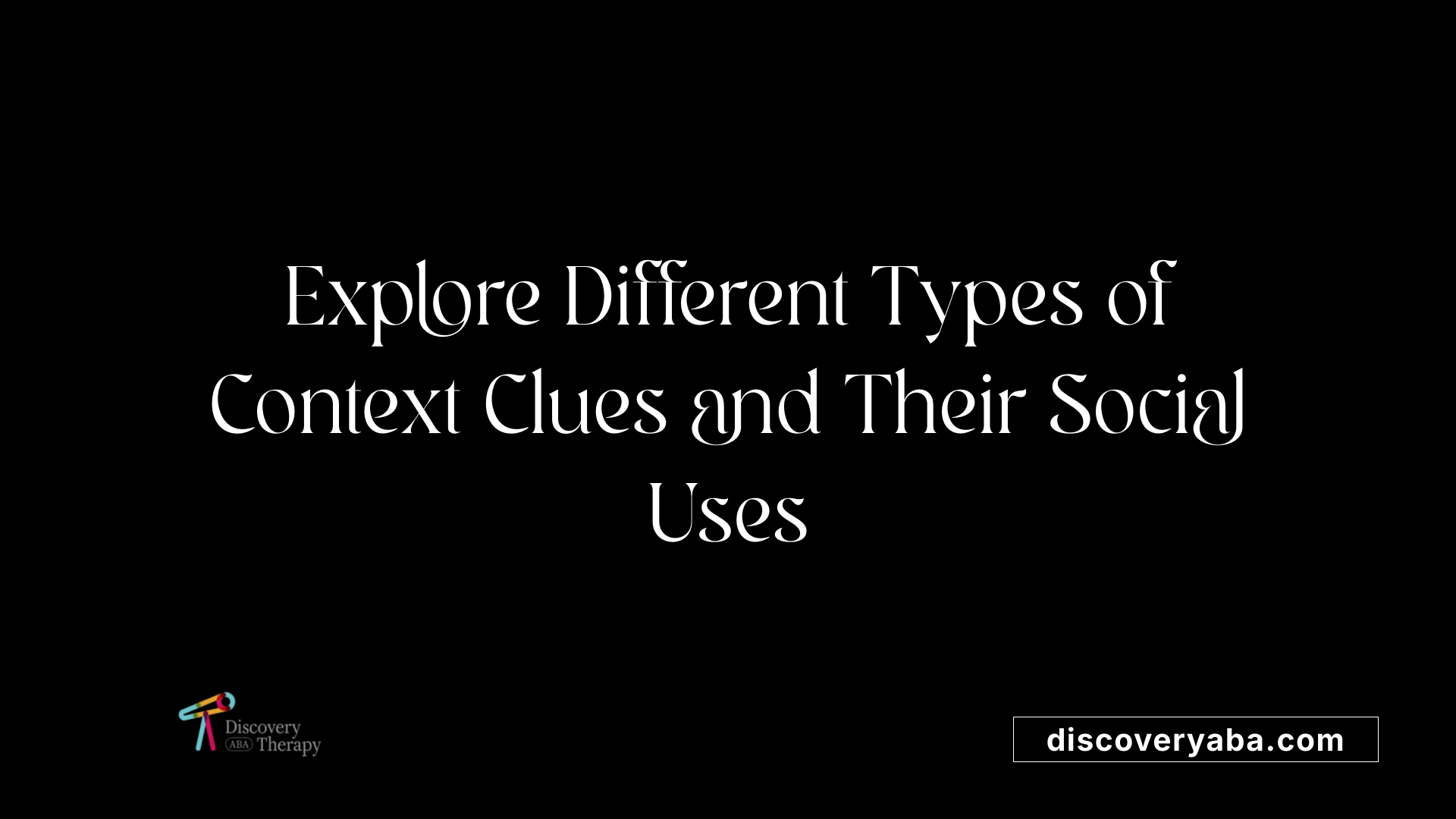
What are the different types of context clues used in reading instruction?
Various types of clues within texts help students decipher the meanings of unfamiliar words. Recognizing these clues allows readers to become more independent and active in their reading.
One common category is synonyms and antonyms. Synonyms are words that have similar meanings, so encountering a synonymous word nearby can clarify an unknown term. Conversely, antonyms provide words with opposite meanings, offering contrasting clues. These nearby words help readers deduce the meaning through comparison.
Definitions and descriptions constitute another group of clues. Often, the text explicitly states the meaning of a challenging word within a sentence, providing a straightforward explanation. Descriptions give additional details about the word, often elaborating on its characteristics or features, which can make the term clearer.
Examples and inferences also play a significant role. Examples include specific instances that demonstrate how a word is used, helping to form a mental picture of its meaning. Making inferences involves reading between the lines—using context and prior knowledge to conclude what a new word might mean.
In addition to identifying clues within the text, active reading strategies significantly enhance understanding. Students are encouraged to circle unfamiliar words, underline key phrases, and rephrase sentences—a process similar to detective work. These actions promote engagement and help students piece together clues.
Implementing these strategies involves explicit instruction, where teachers introduce the concept of context clues, model how to identify them, and then guide students through practice activities. Using texts across a variety of genres—poetry, fiction, and informational pieces—further enriches students’ ability to recognize and apply different clues.
Tools like graphic organizers and task cards with challenging texts can aid learners in focusing on context clues. Additionally, integrating visual elements such as word profiles or annotated texts supports deeper comprehension.
For social situations, understanding how context clues work enhances communication. When discussing unfamiliar topics, people often use synonyms, examples, or explanations to clarify their meaning. Recognizing these clues in conversation can improve understanding and engagement in social interactions.
Overall, consistent practice in identifying and applying different types of context clues builds vocabulary and strengthens reading comprehension. Research underscores that explicit teaching combined with daily routines and interactive activities results in more confident, independent readers who are better equipped to navigate unfamiliar language both in the classroom and social settings.
Engaging Activities for Teaching Context Clues in Social Environments
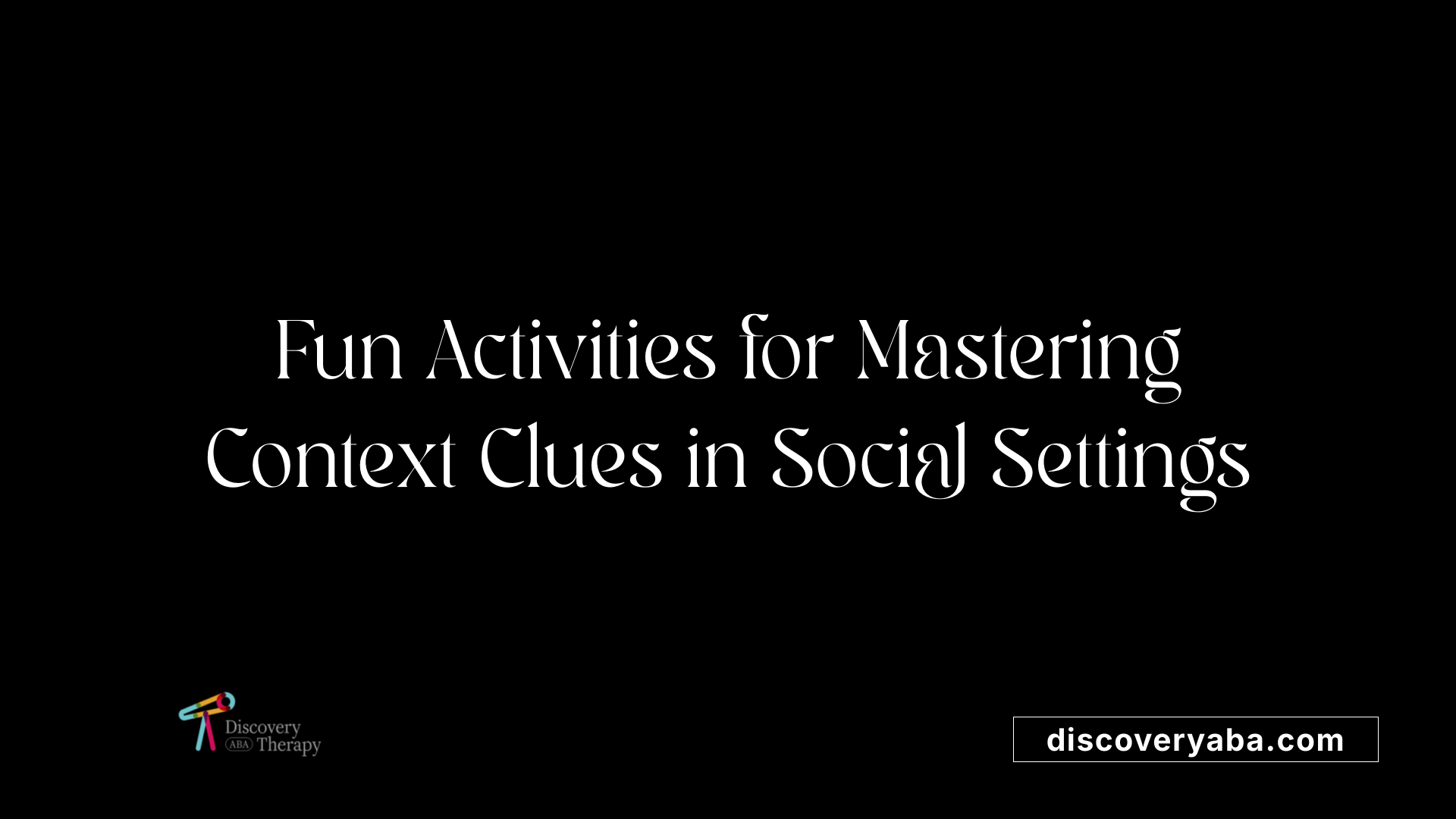
What are some fun and engaging activities for teaching context clues?
Teaching context clues becomes more effective and enjoyable when classroom activities are interactive and varied.
One popular approach is the sentence search game. In this activity, students hunt through sentences for hints that reveal the meanings of unfamiliar words. This game encourages careful reading and critical thinking, as students learn to identify different types of clues like synonyms, antonyms, and explanations.
Another engaging technique involves creating silly sentences with made-up words. Students then use context clues to infer what these new words might mean. This playful activity reduces anxiety around unknown words and promotes inference skills.
Visual aids and charts also play a crucial role. Teachers can design graphic organizers that categorize types of clues—like definition clues, synonym clues, and example clues. When students see these visual representations, they can more easily recognize and apply them in texts.
Partner and group work help build collaborative problem-solving skills. Activities such as strategy swaps, where students share how they deduce meaning using clues, foster peer learning and discussion.
Routine exercises like the "Word of the Week" challenge, which includes daily practice tasks focusing on different clue types, reinforce learning systematically. Teachers can incorporate sticky notes for students to mark clues in texts or use graphic organizers to map out clues and meanings.
In addition to these activities, digital tools and interactive routines—such as online quizzes, vocabulary games, and reading conferences—bring an element of modern engagement that motivates learners.
Using these varied and social methods, teachers can create a classroom environment where understanding unfamiliar words through context clues becomes a lively, skills-boosting part of literacy development.
Implementing Context Clues Instruction in Diverse Learning Environments
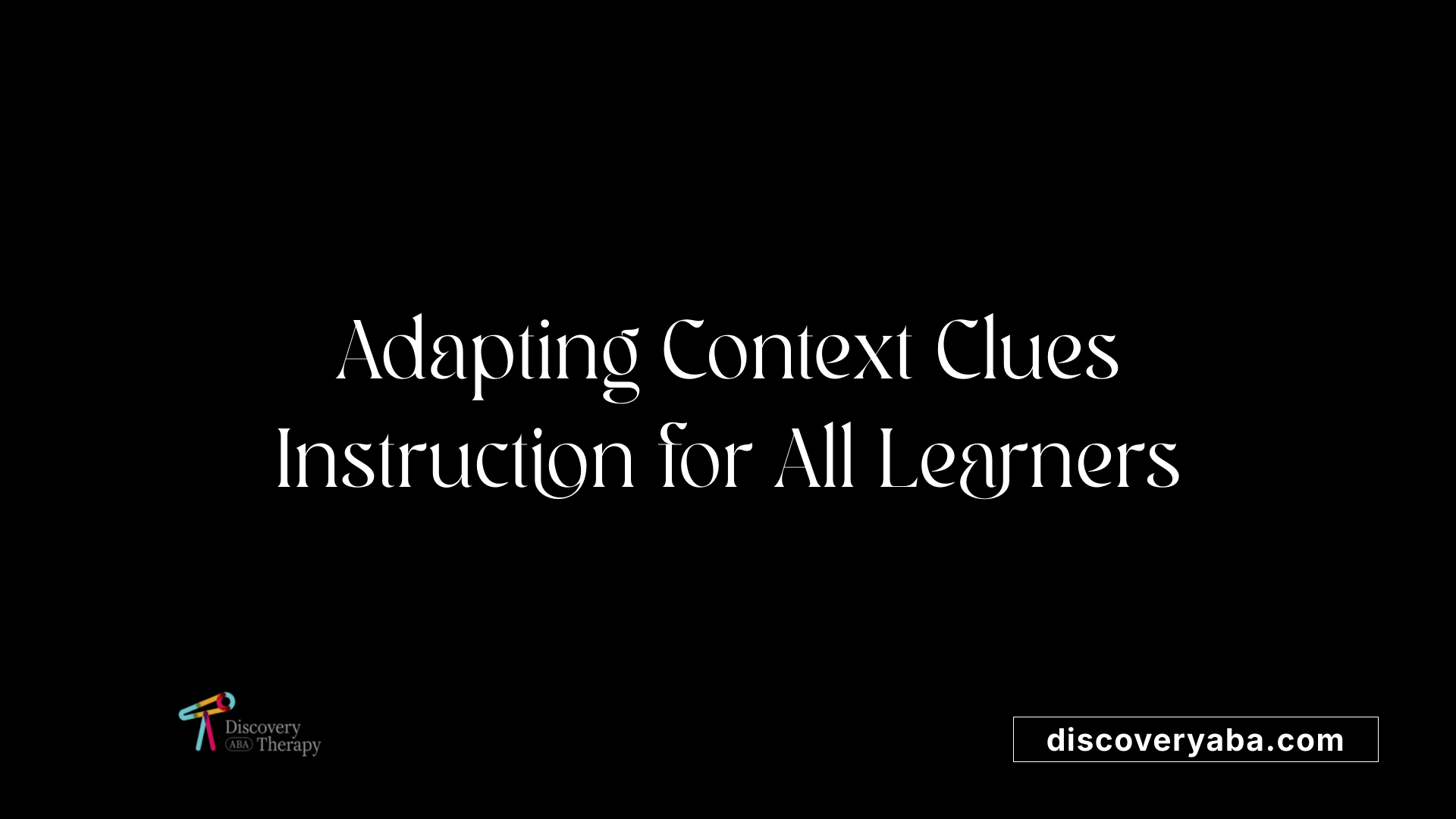
How can educators integrate context clues into literacy and language instruction for diverse learners?
Integrating context clues into literacy lessons involves teaching students to recognize different types of hints within a text, such as definitions, synonyms, antonyms, examples, and restatements. Teachers can use explicit instruction methods, including modeling these strategies during reading lessons and creating visual supports like anchor charts that illustrate different clues.
Classroom activities are essential for practicing these skills. Partner work encourages students to collaboratively analyze sentences, identify clues, and infer the meanings of unfamiliar words. Discussions and comprehension questions can further deepen understanding by prompting students to verbalize their reasoning.
Guided reading sessions offer opportunities for students to pause and examine text for clues, promoting independent decoding. Teachers can utilize tools like graphic organizers to help students organize their thoughts and strategies.
For diverse learners, including English language learners and students with special needs, it’s particularly important to incorporate rereading strategies and connections to familiar contexts. Repeated, meaningful practice across different subjects and texts enhances achievement.
Finally, ongoing assessment and collaboration among educators support differentiated instruction, ensuring all students develop strong skills in using context clues to boost reading comprehension and vocabulary growth.
Research and Practice-Based Approaches for Teaching Context Clues
What research-based practices support teaching context clues effectively?
Effective teaching of context clues is grounded in research that emphasizes systematic and explicit instruction. Teachers are encouraged to introduce and model different types of clues, including inference, definition, example, antonym, and synonym clues, so students can recognize these hints within texts.
One proven approach involves daily routines such as the Word of the Week, which provides repeated exposure to vocabulary in context. Activities like flagging unfamiliar words in texts and using graphic organizers help students organize and internalize strategies for understanding new words.
Incorporating differentiated instruction is also crucial. Teachers can model self-questioning techniques, guide students through practice exercises, and utilize digital tools such as interactive quizzes and annotation apps to foster active engagement.
Another effective strategy is integrating morphology and word analysis, helping students break down complex words into roots and affixes. This strengthens their ability to decode and understand unfamiliar vocabulary.
Research highlights the importance of combining explicit instruction with varied practice opportunities. Examples include using texts across genres, from poetry to informational articles, to practice applying clues in diverse contexts.
Overall, the combination of explicit teaching, repeated practice, and strategic use of technology and texts supports students' ability to effectively use context clues. These practices foster independence and improve reading comprehension, especially for struggling readers.
| Practice Type | Description | Example |
|---|---|---|
| Explicit Instruction | Teacher models and explains how to identify and use context clues | Demonstrating how to find synonyms or antonyms in sentences |
| Repetition & Spiral Review | Regular activities reinforcing skills | Word of the Week routines |
| Graphic Organizers & Digital Tools | Visual supports for understanding clues | Using sticky notes, graphic maps, or annotation apps |
| Morphology & Word Analysis | Analyzing word parts to decode meanings | Breaking down 'unhappy' into 'un-' and 'happy' |
Building Social and Language Skills through Context Clues
Teaching social context clues and strategies for decoding meaning build vital social and language skills that support successful interactions in diverse settings. By employing explicit instruction, engaging activities, visual supports, and research-backed approaches, educators can foster stronger communication, enhance vocabulary understanding, and create inclusive learning environments. Continuous practice, collaboration, and reflection ensure that these skills become integral parts of everyday social and educational experiences, ultimately empowering individuals to navigate social cues confidently and effectively.
References
- How to Teach Context Clues: A Guide for TESOL Teachers
- How to Teach Context Clues - TeamTom Education
- Teaching Context Clues in Secondary ELA - Moore English
- Teaching Context Clues: A Simple Approach That Works
- Solving Word Meanings: Engaging Strategies for Vocabulary ...
- Using Context Clues to Understand Word Meanings
- Teaching Context Clues: A Simple Approach That Works
- How to Teach Context Clues - TeamTom Education
- 3 Word Study Resources You Can't Live Without! (And No Worksheets)
- Teaching Context Clues Simple Strategies That Work
Does Your Child Have An Autism Diagnosis?
Learn More About How ABA Therapy Can Help
Find More Articles
Contact us
North Carolina, Nevada, Utah, Virginia
New Hampshire, Maine
Arizona, Colorado, Georgia, New Mexico, Oklahoma, Texas
.avif)




































































































